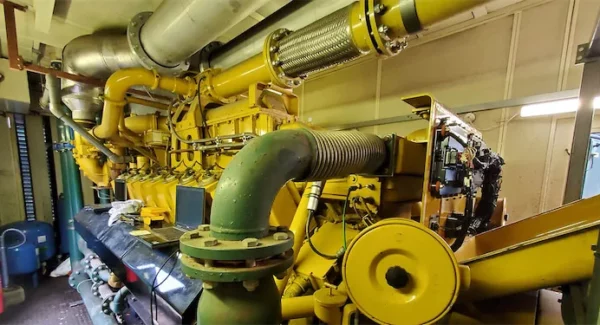Despite an increase in domestic use, the closure of industry in the early stages of the pandemic resulted in a short-term reduction in demand for power. The long-term trend however has not changed and today, as activity across industry returns to normal, the National Grid is under greater pressure than ever before. Coupled with factors such as the electrification of heat and the increased adoption of electrified transport, the strain on its aging infrastructure is beginning to show.
In fact, warnings were recently issued that the growing number of plug-in cars could cripple the National Grid in less than 20 years. Meanwhile battery and plug-in hybrids represent a rapidly growing percentage (up by 185%) of total UK car sales.
Driven by emissions targets, it is a trend that is only going to increase. EV charging points will therefore be an essential part of our general infrastructure and this means greater consideration will need to be given to the power supply – charging points outside every business will be of little use if the lights go off once all the staff have plugged in and logged on.
It is a reality at odds with the vision of International Energy Agency (IEA), which believes 2050 net zero targets are achievable and energy needs can be met without the need for investment in new fossil fuel supplies. The IEA’s vision requires sustained growth in the adoption of electric vehicles, to more than 60% of new car sales by 2030.
Clearly the transition to a low carbon economy will require the support of businesses and all major energy users to reduce pressure on the grid. Without a significant reduction in reliance upon it, the risk of blackouts and associated costs, can only increase. And we do not need to look too far back to examine the reality of such incidents.
On 9 August 2019, the UK experienced its most significant power cut for many years. Lightning strikes caused two power stations to go off-line and the unexpected loss of power caused a drop in grid frequency which led to a loss of supply for more than one million customers across Britain.
The incident and subsequent chaos was widely reported and raised fundamental questions about the future of the National Grid, its resilience, and the ongoing transition to low carbon generation. Ofgem fined the three companies involved more than £10 million.
The Government meanwhile confirmed it would implement all the recommendations made by EC3, a partnership between government, Ofgem, and wider industry, to improve the resilience of Britain’s power networks.
Less well known is the fact that despite these actions, at one point in September 2020 – well outside the period of peak demand in winter – the blackout risk reached 37%. And while the drop in grid frequency to 48.8Hz was the principle cause of the August 2019 blackout, in reality it is just one of the challenges the grid is facing. The risk of blackouts, as well as so called brownouts where a partial supply is maintained but which can cause equally if not more damaging malfunctions to electrical equipment, not to mention sags, surges and spikes, all present a real challenge and one which growing demand for power will only exacerbate.
For businesses dependent upon a grid that is arguably less than ideally positioned to manage these risks, on-site generation is proving increasingly popular. It is also a proven means of reducing costs, removing third party charges which can make up as much as 60% of an electricity bill and which are unavoidable unless a company can generate its own energy or dramatically reduce its power requirements.
On-site generation, which reduces dependency upon the grid, therefore also allows businesses to mitigate the negative impacts upon the energy sector of wider issues such as Brexit.
At the end of 2020, reports in the national media exposed the UK’s dependency on power from the EU, highlighting Brussels’ ability to shut down supplies of gas and electricity in reaction to the dispute over fish stocks. Media attention centred on the emotive fishing rights dispute but brought to public attention the significant impact of losing power supplies from the EU which meet more than 8% of UK demand.
Significant and continued uncertainty remains a huge cause for concern and led to extremely high blackout risks during the winter of 2020/21. Independent analysis of the National Grid’s Winter Outlook conducted by a global energy trading company, implied the risk was as high as 99.7%.
And because energy prices now move independently of the EU, it is quite possible that during the winter and periods of peak demand, the UK will find itself exporting power due to the price difference, at exactly the time when the need to import additional power is at its greatest. Inevitably, this kind of volatility affects the market and in January 2021, power prices reached record highs.
It’s a double-edged sword which business cannot afford to ignore. For many, surviving the pandemic has already required unprecedented levels of adaption and innovation. Now there is a new opportunity to innovate and cut downtime, one which lies behind the meter.
Of course, the real cost of downtime depends on the nature of an individual business. A short stoppage on a production line could cost thousands. For some it will quickly run into millions. An outage at a data centre would require a reboot – the power failure to British Airway’s data centre in 2017 for instance was estimated to cost more than £80m, while a study by Gartner put the average cost of downtime at $5,600 per minute. Yet for big businesses, costs of this level can often be more easily absorbed than much smaller amounts by others for whom the effect may well have a more serious effect on the bottom line.
On-site generation, which allows sites to remain connected to the grid but which dramatically improves resilience as the baseload demand can be supplied independently, not only reduces this risk but insulates the energy user from the sort of volatility in prices already witnessed this year.
Including systems that can either part or fully operate on hydrogen fuel, it is also a way in which business can support the UK’s legally binding targets for tackling climate change and decarbonising the grid.
In addition to on-site generation, storage technologies including gas generation, renewables, battery storage systems and controls will also be appropriate for some businesses and these CAPEX free installations, owned and operated without cost, are at the heart of Ylem’s model.
Providing a steppingstone to a low carbon future, the adoption of on-site generation and the savings it creates also makes strategic investment in new technology to decarbonise further, increasingly viable. Indeed, rather than paying the unavoidable charges applied to energy bills for grid connected renewables, on-site generation creates an opportunity for companies to invest in their own renewable power generation infrastructure in the future.
And of course, all of this will underpin increasingly important sustainability targets for industry and form part of the journey which Ylem is helping many companies take towards a renewable and sustainable, carbon neutral future.





